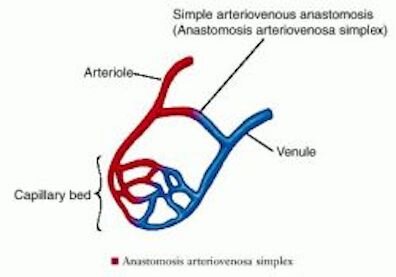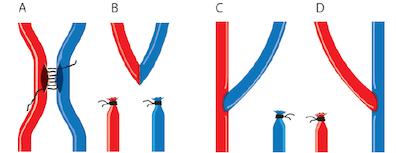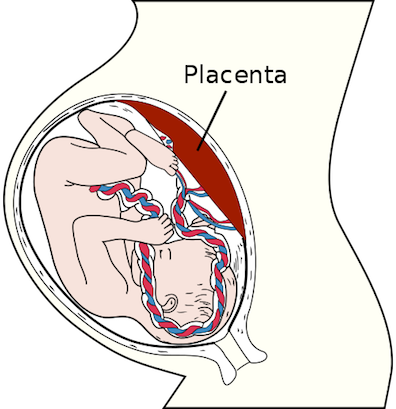Anastomosis
Anastomosis
In Brief
In Oxen of the Sun Stephen imagines all of
humankind "linked up" with its first mother, Eve, "by
successive anastomosis of navelcords." An anastomosis, in
medicine, is a connection between adjacent tubular structures,
whether natural (e.g., capillaries), accidental (e.g.,
fistulas), or surgical (e.g., gastric bypass). In Stephen's
imagination such connections can be both interpersonal and
infinite. The umbilicus connects the vascular network of the
child to the vascular network of its mother, another umbilicus
connected that mother to her mother, and so on, with the
logical result that all of us are still bathed in the first
woman's blood.
Read More
The language suits the context of Oxen: Stephen
briefly considered pursuing a
career in medicine, and now he apes the talk of Mulligan
and the other young medicals, just as he appropriated
Shakespeare's words in Scylla and Charybdis. But the
underlying conceit is sheer fantasy. It grows out of his
extravagant thoughts about omphaloskepsis
and telephony in Proteus,
where gaining mystical oneness with the universe means
gazing into your navel, and the umbilicus becomes a phone line
to Eden. Here in Oxen Stephen seems to be imagining a
physiological vehicle for the Catholic doctrine of original
sin: a long chain of veins and arteries explains how Eve's
transgression "sold us all, seed, breed, and generation,
for a penny pippin."
Tubular structures appear often in Ulysses as figures
for the exchanges that occur between humanity and its physical
and social environment. Molly thinks of Paul de Kock "going about
with his tube from one woman to another," evoking a view
of sexual intercourse as a kind of anastomosis between
penetrator and penetrated. The term comes from a Greek verb
meaning "to furnish with a mouth," and mouths too function as
a kind of link to the world outside the self. They stand at
one end of a tube through which, day after day, a human being
takes in and casts out the other. In Lestrygonians Bloom
thinks of a cycle that is as inexorable as it is endless: "stuffing
food in one hole and out behind: food, chyle, blood, dung,
earth, food: have to feed it like stoking an engine."
This chapter seems to recognize sympathies between the
different piping systems in the human body. The line between
ingestion and sexual exchange became blurry in the memorable
kiss that took place between Molly and Bloom on Howth Head:
"Ravished over her I lay, full lips full open, kissed her
mouth. Yum. Softly she gave me in my mouth the seedcake warm
and chewed. Mawkish pulp her mouth had mumbled sweet and sour
with spittle. Joy: I ate it: joy." After Bloom thinks about
the constant need to eat and excrete, he wonders whether
goddesses have anuses, and then his penis becomes
simultaneously a site of urination and sexual intercourse:
"Dribbling a quiet message from his bladder came to go to do
not to do there to do. A man and ready he drained his glass to
the lees and walked, to men too they gave themselves, manly
conscious, lay with men lovers, a youth enjoyed her, to the
yard."
The "anastomosis of navelcords" conceit takes such thoughts
in a metaphysical direction, applying the principle of
interpenetration to impalpable realities no less than physical
ones. Several pages later in Oxen of the Sun, one of
the chapter's narrators reinforces Stephen's idea. When he
cowers before the thunderclap and Bloom attempts to soothe his
fears, the Bunyan-like voice says: "Heard he then in that clap
the voice of the god Bringforth or, what Calmer said, a hubbub
of Phenomenon? Heard? Why, he could not but hear unless he
had plugged up the tube Understanding (which he had not
done). For through that tube he saw that he was in the
land of Phenomenon where he must for a certain one day die as
he was like the rest too a passing show."
As so often in Oxen, the thought underlying the
baffling verbiage is relatively straightforward: Stephen takes
no comfort from Bloom's observation that thunder is only a
natural phenomenon, because in such a world he too is only a
natural phenomenon, doomed to vanish. But to see this highly
abstract way of "Understanding" mortality as a "tube" is
surpassingly strange. How is cognition like circulation,
ingestion, excretion, and intercourse? To what is Stephen's
mind connected? Is the exchange one-way, or reciprocal?


